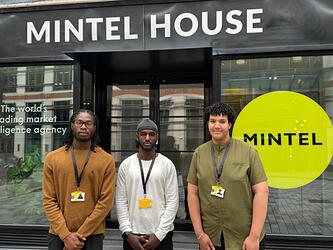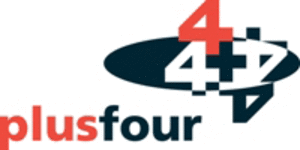Make us laugh
Sport Relief, one of the UK’s biggest fundraising events, takes place this month, and the campaign is in full swing to encourage the public to get active and raise money. The call to action has been informed in part by research carried out for Comic Relief’s other big event, Red Nose Day.
Last year Comic Relief celebrated its most successful Red Nose Day ever, raising over £100m. The charity has worked hard to understand how its supporters engage both with its brand and with the supporting material it provides for fundraising activities, and last year it chose to work with research consultancy SPA Future Thinking.
The challenge
Comic Relief was launched on Christmas Day 1985 – when famine was afflicting Ethiopia. The charity’s premise was simple: it would make the public laugh while they raised money to help people in need. The first Red Nose Day in 1988 raised £15m, and to date thirteen Red Nose Days have raised more than £600m.
Comic Relief is clearly successful in getting the public to “do something funny for money”, and 95% of people in the UK are aware of the charity. But the ongoing success of Red Nose Day and Sport Relief depends on fundraisers and the public.
The brief
Our objective was to research the success of Comic Relief’s marketing and messaging in inspiring people to get involved. Comic Relief wanted deeper insight into how fundraisers and the general public engaged with its messages and fundraising materials, to analyse and evaluate last year’s campaign activities and inform future planning. Any strategy we developed had to be highly cost-effective. With this in mind we created a research programme that would track engagement and recall of Comic Relief’s marketing campaign in the run-up to Red Nose Day. It would cover all media including word-of-mouth, and it would look at the public in general as well as fundraisers.
The approach
The research involved online diaries followed by focus groups, a website survey, and an email survey.
We opted to use online diaries as the centrepiece of the qual strand because we knew that Comic Relief has an engaged community of fundraisers who are happy to give up their time. A group of 36 people in Birmingham, Manchester and London kept diaries of any interaction they had with Comic Relief in the run-up to Red Nose Day. Participants were also asked to write a weekly blog on what they had seen about Red Nose Day and how it influenced their behaviour. Each diary was monitored weekly by SPA Future Thinking and Comic Relief.
“For the first few weeks we monitored what happened spontaneously,” said Genny Murphy, marketing manager at Comic Relief. “As we got closer to Red Nose Day we drove fundraisers towards specific areas of the campaign more overtly.”
We followed this with focus groups in the week after Red Nose Day, looking at how the marketing and media campaigns influenced the fundraising events held by participants.
Fundraisers took part in an email survey to see how useful they found the marketing materials and how their sponsors reacted to them. We also ran a website survey to track responses to the website.
Murphy said the project was “a great way to benchmark what really works across all media, from programming to press and outdoor advertising and the word on the street”.
The findings
“We’re big on audience segmentation here, and the depth of this research programme and its findings have been invaluable in giving us insight into specific target audiences,” said Murphy.
The online diaries were the most in-depth SPA has ever undertaken – in fact it was difficult to handle the sheer volume of responses at times. They provided remarkable insight from a variety of audiences on how, and with how much success, fundraising materials were used.
“We were able to see that people order a fundraising kit early on, even when they are not planning to use it until later,” says Murphy. “They just like to have one and be able to spend a long time thinking about ideas. We saw that a lot of people were ordering kits just to get the sponsorship form, so we were able to think about things like making the option to download the form more prominent.
“Knowing the reasons people were ordering the kit meant we were able to adjust the online messaging.”
More than 1,000 people responded to the website survey, with 92% saying the website was good or excellent in its usefulness and design.
“In the short term, the qualitative element enabled us to tweak our 2011 Red Nose Day campaign in real time. And while some of the research confirmed what we thought we knew, most of the findings gave us the confidence to substantiate that insight and act on it in the long term.”
The outcome
Not only did the research enable Comic Relief to respond in real time, it also delivered insight into specific target segments that is informing the development of future campaigns and strategies.
The qualitative research among fundraisers is already influencing communication strategy and printed materials for the 2013 Red Nose Day campaign as well as this year’s Sport Relief.
The overarching scope of the email survey has helped Comic Relief gain an in-depth understanding of how its partnerships with supporters such as Sainsbury’s, Walkers and Maltesers are perceived.
“The research showed us just how important the exposure we get from Sainsbury’s and all our other partners during the campaign is,” said Murphy. “It is also great to be able to share with our partners – who give us so much support – that the general public perceive our partnerships really positively and that they help to improve public perception of them too.”
Insight from the research has also helped Comic Relief to target fundraisers. “We saw from our younger 18-35 audience that we need to target them with a campaign which isn’t just a variant on the main campaign, but is really bespoke for them. As a result, for Sport Relief 2012 we are doing exactly this, and our younger audience will be targeted with a campaign that feels more like it’s been created for them.”
The research is already helping Comic Relief to save money on marketing. It revealed that first-time fundraisers had different needs from more experienced ones. Comic Relief initially produced just one fundraising pack, but for the next Red Nose Day it hopes to communicate with these two groups separately.
Murphy said: “While we still refer to research from previous campaigns at times, this is the first piece of research where the same agency has drawn together all the strands of qualitative, quantitative, web surveys and email surveys and analysed them together and against each other to give us overall conclusions rather than having to compare those different pieces of research ourselves.”
For the team at SPA Future Thinking, it has been great to work on a project that may well deliver a real difference to the lives of so many people.

We hope you enjoyed this article.
Research Live is published by MRS.
The Market Research Society (MRS) exists to promote and protect the research sector, showcasing how research delivers impact for businesses and government.
Members of MRS enjoy many benefits including tailoured policy guidance, discounts on training and conferences, and access to member-only content.
For example, there's an archive of winning case studies from over a decade of MRS Awards.
Find out more about the benefits of joining MRS here.













1 Comment
Ruth Betts
14 years ago
Great case study, and a fabulous good news story on how our industry can really make a difference.
Like Reply Report